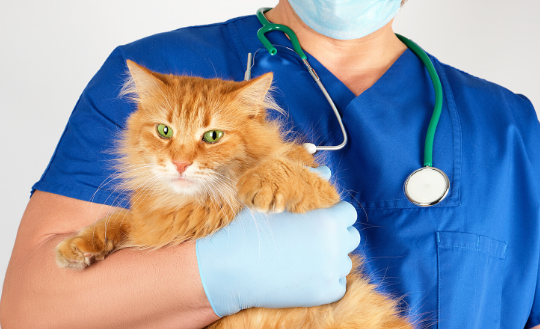We all need someone to lean on. The last few months of chaos, heartache, and uncertainty that has encircled the country in response to COVID-19 have made us, more than ever, search for our someone (or some animal) to lean on.
Therapy animals have long been familiar faces in nursing homes, hospitals, veteran’s homes, and even prisons. They bring with them the ability to provide comfort, offer a calming presence, and help build self-esteem and self-awareness for people suffering from depression, anxiety, and PTSD. Now therapy animal’s skills are being used on the COVID-19 front lines to provide assistance to health care professionals, essential workers, patients and their families, and anyone who needs a little uplifting during these questionable times.
What Do Therapy Animals Do?

We’re all familiar with service animals – those that help the blind, deaf, or disabled to perform everyday duties. Service animals are specially trained in certain skills to help their owner live a more independent and safe life. They can alert their owner that the phone is ringing, or that it’s safe to cross the street.
While service animals are trained to do many different tasks, therapy animals only have one duty: to lift spirits up. While this may at first seem easy, it’s not always a slam dunk kind of profession. Therapy animals undergo training of their own in which they learn obedience, adaptability, and socialization. They need to learn how to be there for whoever needs them whenever and wherever they are needed.
Since therapy animals come in all shapes and sizes, from cats and dogs to pigs and horses, they provide different methods of comfort. Some therapy animals may offer up a wagging tail or a comforting purr. Others provide people with a job to do that distracts them from their fears or helps them build self-confidence.
Therapy Animals and COVID-19
So, how are therapy animals being put to use in the COVID-19 pandemic? Let’s just say in ways that are as creative as they are resourceful. With social distancing in place, therapy animals that once made their rounds through nursing homes or hospitals are now sidelined – but that doesn’t mean they still can’t do their work. Just like many of us that have been forced to do our jobs from afar, therapy animals are doing their own telecommuting. Through the use of social media platforms and video calls, therapy animals are able to continue doing what they do best. Some are virtually visiting the Lucile Packard Children’s Hospital while others are updating their friends via Instagram.

Other therapy animals are taking their work right into the trenches and offering support to healthcare workers and patients in hospitals across the country. These therapy animals are often owned by medical personnel rather than the general public, allowing them access to healthcare facilities without exposing additional people to the coronavirus.
Equine-assisted therapy
Therapy animals are being put to use on the outskirts as well to provide front line workers with an escape from the stresses of their job. Equine therapy has long been used to help veterans overcome and manage PTSD and to help couples learn about nonverbal communication during marriage counseling. The Veteran’s Club has recently opened their gates and services to anyone on the COVID-19 front lines. The sights, smells, sounds, and feel of the horses help them better cope with their extended responsibilities and to find peace of mind with a little self-care.
COVID-19 has spread more than uncertainty, anxiety and tension across the country, it has also produced more unity, trust, and resiliency. We have all sacrificed and compromised our way of life in order to protect ourselves and others. Instead of giving up completely on certain amenities, we have found other ways to provide them. Therapy animals are a prime example. They provide four-legged comfort as an invaluable service, and thanks to some imaginative resources those on the COVID-19 front lines can still benefit during these stressful times.







